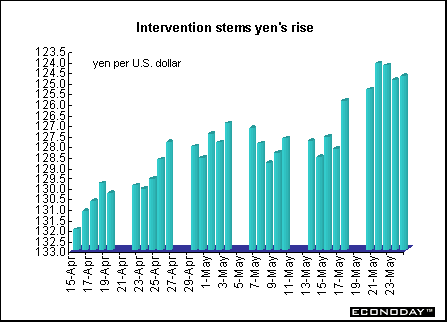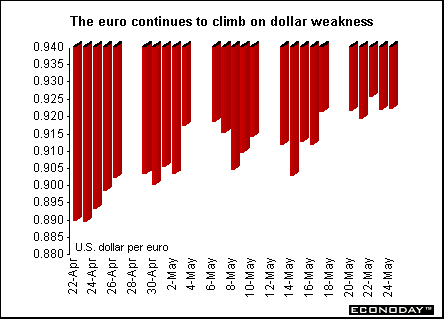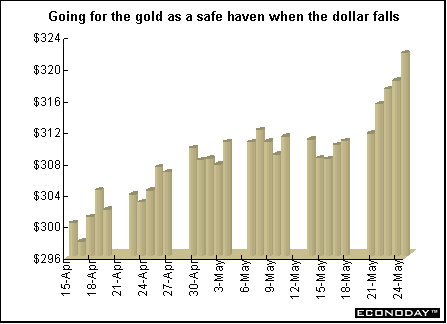CurrenciesThe foreign exchange market continued its assault on the U.S. dollar, especially versus the yen. However, intervention by the Bank of Japan on Wednesday and Thursday has stabilized the dollar for now. If past is prologue, note that the yen also jumped when Japan's economy began to rebound in 1995 and 1999. But a stronger yen is a negative for an economy that still lacks momentum on the domestic side. When currencies rise on expectations of economic recovery, the rise hurts exporters and threatens to nip any recovery in the bud. The increased value of the currency makes exports to the United States less competitive and threatens the very economic expansion that is driving the currencies up.  In Japan, exports make up only about 10 percent of gross domestic product. But exports are the most dynamic sector of the economy. Japanese car companies, for example, have been making gains overseas at the same time that domestic consumption continues to languish. And with domestic consumption so flat, any increase in exports has a very big impact. Exporters are now predictably concerned that the yen’s rise will squeeze overseas revenues. While the spotlight at the moment is on the yen, the euro has also been benefiting from dollar bashing. On Thursday, for example, Germany released truly abysmal GDP data. But currency traders ignored the bad news and bid up the euro anyhow. Right now, anything dollar related is bad news — even if it is good news — while any news from the EMU is blithely ignored by market players. Europe is lagging the United States in economic recovery by at least one quarter. In addition, it continues to struggle with structural reforms especially in the labor and financial markets. Unlike the U.S., inflation has become a gnat in the ear of the ECB, which by charter must steer monetary policy by price expectations.  The price of gold has climbed to its highest levels in two and a half years, thanks to its allure as a reliable investment in times of crisis and the declining appeal of other safe haven assets. Rising prices are being driven by Middle East tensions, the increasingly menacing situation in Kashmir and recent terrorist threats against the United States. To some, the U.S. dollar, a traditional safe haven, is looking increasingly vulnerable. But perhaps the biggest spur for gold prices in recent months has come from the Japanese market. Many investors there are hoarding gold amid rising concerns about the safety of the banking system. The flight into gold increased after April 1, when the government placed a cap of ¥10 million ($81,000) on deposit insurance for some types of accounts.  |
![[Back To Archive]](../../../images/backtoarchive.gif)